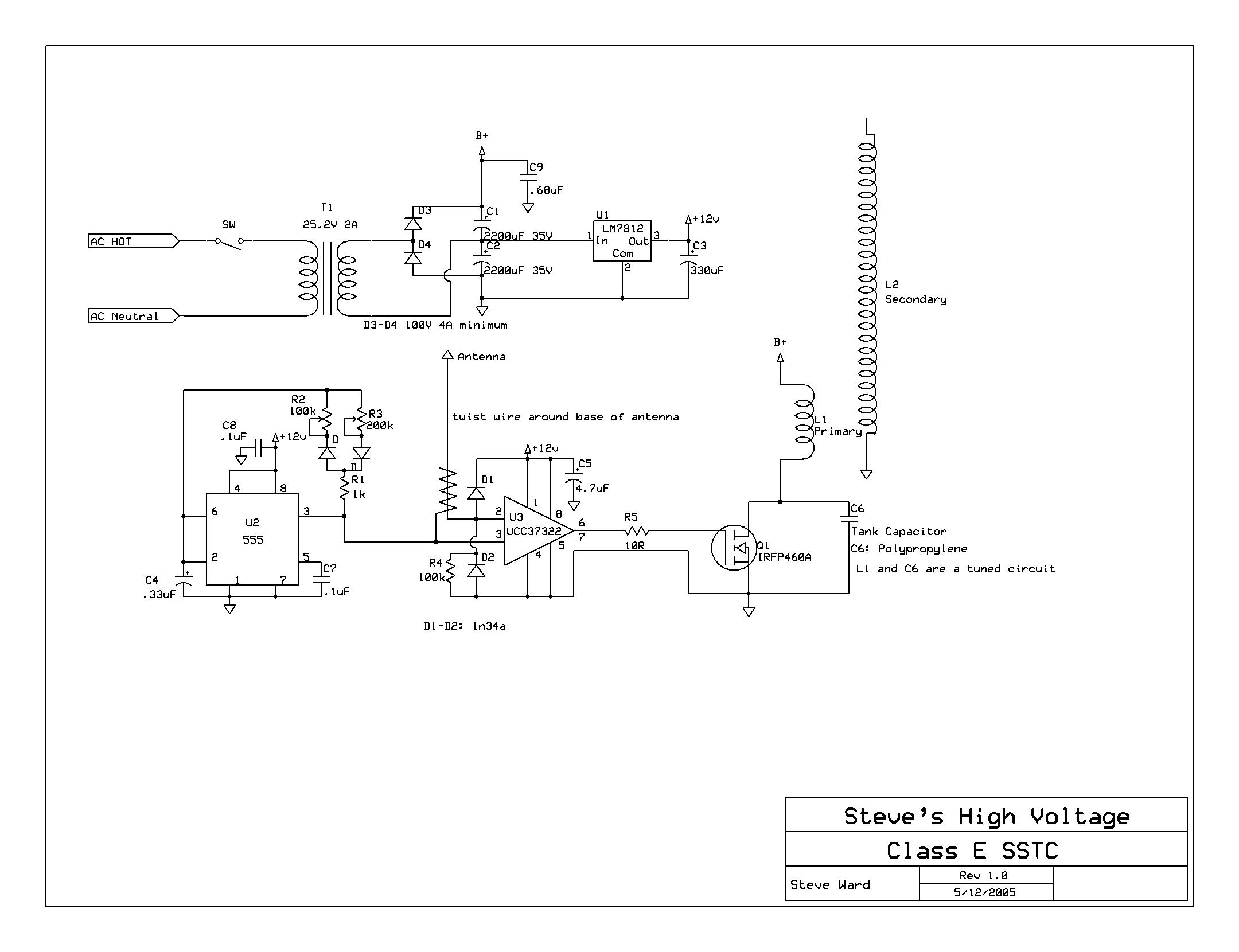Overclocked
Member
(With Respect to 12V ofc.)
I have a project that requires a relatively high voltage, with respect to a low voltage. Its basically switching a high voltage load using a mosfet for a class E SSTC I intend to build eventually. The driver (UCC3722) uses a 12v Supply. The original circuit uses a 25VRMS transformer, but I cant find one for cheap. The transformer I have outputs 74.4VRMS / 117.36V Pk-I know it will be about 1.4V less after rectification.
I plan on using a LM317 (or LM7812) to power the 555 and the Driver. Im going out on a limb to say it probably wont need more than 1 amp, but even 1 amp is a lot. However, it can only be used for a differential voltage of up to 40V. Can I just use a Simple Series Pass Voltage regulator to lower the voltage before the LM317? (or LM7812). The only circuit I can find is this document (https://www.ti.com/lit/an/snva583/snva583.pdf). To me all it looks like is what I proposed. Nothing complex. I think I would get rid of R3, since I dont need a current limit.
Here is the original schematic of what I intend to build. I dont plan on using the voltage doubler because my Supply voltage is already what the doubled value would be. The "easy" solution would be to just use a small transformer to power the driver and 555 timer, but that would be easy. I wouldn’t learn anything that way

I have a project that requires a relatively high voltage, with respect to a low voltage. Its basically switching a high voltage load using a mosfet for a class E SSTC I intend to build eventually. The driver (UCC3722) uses a 12v Supply. The original circuit uses a 25VRMS transformer, but I cant find one for cheap. The transformer I have outputs 74.4VRMS / 117.36V Pk-I know it will be about 1.4V less after rectification.
I plan on using a LM317 (or LM7812) to power the 555 and the Driver. Im going out on a limb to say it probably wont need more than 1 amp, but even 1 amp is a lot. However, it can only be used for a differential voltage of up to 40V. Can I just use a Simple Series Pass Voltage regulator to lower the voltage before the LM317? (or LM7812). The only circuit I can find is this document (https://www.ti.com/lit/an/snva583/snva583.pdf). To me all it looks like is what I proposed. Nothing complex. I think I would get rid of R3, since I dont need a current limit.
Here is the original schematic of what I intend to build. I dont plan on using the voltage doubler because my Supply voltage is already what the doubled value would be. The "easy" solution would be to just use a small transformer to power the driver and 555 timer, but that would be easy. I wouldn’t learn anything that way
Last edited:
